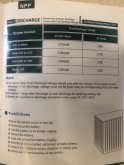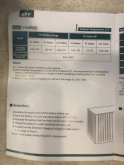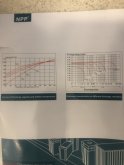The question is how long will the oven be running and what voltage is your inverter's input? Running the oven for 15 minutes is only about 300 watt hours (800 watts of microwaves uses about 1200 watts of power into the oven). That's nothing in terms of battery capacity.
What about amps? Let's say its a 12v inverter. That's around 125 amps (assume lead acid sag to 11.5v and inverter efficiency). For a 24v inverter that becomes about 63 amps. Let's be kind to the battery and assume discharge at 0.5c. 0.5c means we need 250AH 12v battery or a 125AH 24v battery. Of course that's being kind. You don't have to be you could run them hard so 125AH and 63AH respectively.
OK, so what about lithium.
Lithium has no problem holding the voltage up unlike its tired old cousin, lead acid. 12v inverter, about 115 amps (battery at 12.5v). At 24v that becomes about 57 amps (battery at 25v). At 0.5c 230AH and 114AH respectively, but a respectable lithium has no problems with 1C discharge so 115AH and 57AH.
2 x battleborn 12v 100AH battery will do the trick. Obviously there are cheaper lithium options too and for that matter lithium batteries that are quite happy with discharge rates over 1C. My own are rated at 1.4C continuous.
With this sort of low intermittent use AGM batteries are going to run into electrolyte loss issues just by being parked on a float charge. If you plan on keeping the cabin visits up in the long term you are going to run into this problem with the AGMs well before any charge / discharge cycle issues.
You have to think about your inverter too. A cheapie HF inverter at 12v may have trouble running a standard heavy transformer microwave. It wouldn't be the first time that someone has reported this on the forum. If you have an inverter based oven it should be OK even with a cheapie inverter.
A 400 AH lithium battery could do it standing on one foot with one arm tied behind its back.
*edit, left inverter losses out of lithium*






